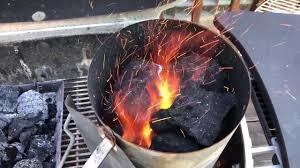
Charcoal-burning suicide is committing suicide by burning charcoal in a closed room. It has similarities with the inert gas asphyxiation method of suicide.
Contents
Mechanism of action
As the charcoal burns, the concentration of carbon monoxide gradually increases. Because of its toxicity (and not the exhaustion of oxygen as sometimes thought) CO concentrations of as little as one part per thousand in the air in a confined space are fatal if inhaled over an extended period. The incomplete combustion of carbon produces carbon monoxide, which binds strongly to hemoglobin, rapidly decreasing the ability of blood to deliver oxygen to the body. This results in death due to hypoxia brought about by carbon monoxide poisoning.
The method is described as "easy and painless" compared to other suicide methods. It is less painful than methods such as jumping from a high-rise building or cutting with a knife. Many who attempt suicide by charcoal burning use alcohol or hypnotic drugs during the attempt, and survivors report that they felt no discomfort.
Some have challenged the description of the method as painless, noting that the lack of oxygen can cause choking. However, this is based on a misunderstanding of the mechanism of action: it is the cumulative serum concentration of CO, not the depletion of oxygen, that causes death. Nonetheless, it is a fact that typical symptoms of acute CO poisoning include headache and nausea, and tachycardia and convulsions are additional symptoms. A survivor of this method usually needs intensive care. They may have permanent brain damage.
History
As a method of suicide it is mentioned by Eugène Sue in The Wandering Jew (1844).
In July 1994, two students of Taipei First Girls' High School committed suicide by charcoal-burning in a hotel in Su'ao, Yilan with a note that didn't say the reason clearly, even though that it was suspected in some mass media that they were a lesbian couple. In November 1998, a middle-aged woman in Hong Kong committed suicide using this method inside her small, sealed bedroom. She had a chemical engineering background. Meanwhile, Hong Kong was suffering from an economic depression at the time, and suicide in general was increasing. After the details of this suicide were highly publicised by local mass media, many others attempted and succeeded in committing suicide in this way (an example of the Werther effect). Within two months, charcoal-burning had become the third major suicide killer in Hong Kong. Charcoal-burning suicide accounted for 1.7% of Hong Kong suicides in 1998 and 10.1% in 1999. By 2001, it had surpassed hanging as the second most-common method of suicide in Hong Kong (second only to jumping), accounting for about 25% of all suicide deaths. The method has since spread to mainland China, Taiwan and Japan.
In March 2003, three Israeli residents of Kafr Qassem, a mother and her two sons, died in their sleep after sealing the room in which they were sleeping, as per Shelter in place guidelines, against potential chemical or biological attack. They had lit a charcoal fire to keep warm, unwittingly following the same preparations in Charcoal-burning suicide and diverging from shelter in place guidelines. The father and another child survived.
On March 9, 2007, Brad Delp, the lead singer of the American rock band Boston, committed suicide using this method.
